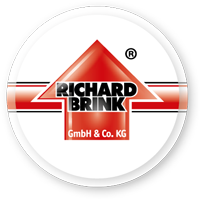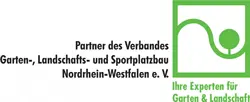The new town house was to blend in with the organic structure of the Wilhelminian-style street in Münster, while at the same time meeting modern construction standards. To achieve this, the architects combined an arch from the historical building fabric with modern elements. Contours in white mark out the dimensions and shape of the house. They follow the design style of the surrounding buildings yet reinterpret it at the same time. Symmetries lend the brick façade a uniform look. Classic components like the steps, entrance, roof and dormer give the building an assertive air. Even the materials used for the façade, terrace and connected pool blend in with the aesthetics: a handful of different building materials interplay and combine to form a discreet structure with an individual design. This style continues inside. The floor plan is first and foremost designed as a single-family home, but the rooms can be converted so that more than one generation can live under one roof if necessary. The stairwell is at the centre of the home and is flooded with natural light. Horizontal and vertical views fill the space with life. The rooms on the three floors group around this corridor.
Reliable terrace dewatering required
In addition to the inside rooms, the generous outdoor area also acts as a private, green place of refuge for the residents. A pergola spans the terrace that runs along the side of the house and merges with the pool area. A wooden deck comprising large-format, light beige tiles blends into the terrace space. To reliably drain precipitation away from the area and the façade, a suitable dewatering system was needed. Drainage channels that could be installed in mono-grain screed were to be used at all door and window elements of the ground floor. To ensure a smooth transition from indoor to outdoor, a minimal installation height was required. Aesthetically, the system also had to match the overall architectural design.
Channels and designer gratings combined
A combination of channels and designer gratings from Richard Brink meet these functional and visual requirements. Employees from Natursteinwerk Otto GmbH based in Kamen fitted the doors and windows with the custom-made systems using the entire depth of the reveals. The Hydra drainage channel with an inlet width of 140 mm drains away rainwater directly into the ground below. It is height-adjustable and can therefore be adapted to suit the floor level. The Staccato cover gratings give a special look to the system. The interrupted longitudinal bars make the gratings non-slip besides creating a variable aesthetic. And yet, the clear structure matches the dark, rarely changeable brick façade. The black-grey plastic coating on the channels in the parterre matches the colour of the window frames, while the stainless steel, which was sanded back on the tread surfaces, provides a rich contrast. Fascinating and yet harmonious, the aesthetics of the gratings blend in with the building’s overall design concept.
The Silex gravel stops reliably hold the fills in front of the souterrain of the house, preventing them from getting into the drainage system and ensuring the unobstructed flow of water. Like the channels, the stops are also made from 1.5 mm stainless steel.
Natural and clear
The metal products and building materials typical of the region used for this home in Münster complement each other: while the ground and façade stones give the building a natural feel, the stainless steel systems stand for clarity and modernity. In their interplay, they meet the demands for high-quality design and also long-term functionality.











